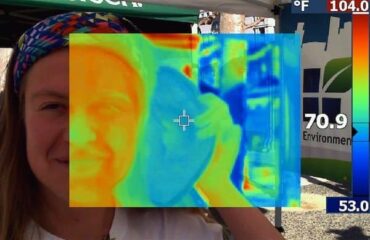Airtight Construction for Laboratories

Effects of Airtight Construction on Lab Pressurization
Most labs and clean rooms require airtight construction to create differential pressure with respect to adjoining spaces. Labs are usually maintained at slightly negative pressure to keep the chemicals used in the labs from migrating to adjacent spaces. Clean rooms, on the other hand, have to be kept at a slight positive pressure to keep particulate matter in adjoining spaces from infiltrating into the clean room. In labs especially, this is easier said than done. Labs tend to have many sources of exhaust that can operate at varying levels including flow hoods, biosafety cabinets, laminar flow hoods, snorkels, etc. Additional sources of exhaust may also be added at a later stage well after design and construction are complete. All this creates a constant challenge to keep labs at design pressure. When this is coupled with leaky ducts and a leaky envelope (walls and ceilings encasing the lab) it may become impossible to maintain the lab at the appropriate pressure.
While safety factors that account for leaky envelopes and ducts are used in determining the required CFM, since air sealing is usually not a priority with the design or construction team, mistakes can easily be made during construction. Architectural drawings normally do not contain the necessary level of detail and specifications do not go into specifying the appropriate materials and installation procedure. Even when architectural drawings do provide appropriate construction details, they are often ignored by the construction crew. Lack of oversight, pressure from fast-paced schedules and lack of coordination among various teams of subcontractors compound the problem.
In order to achieve a tight lab envelope, it needs to be made a priority. Targeted levels of air tightness can be achieved by designing to it, followed by careful installation and inspection. Various measures need to be taken during design to minimize mechanical, electrical and plumbing penetrations and appropriate caulks, putties and sealants assigned to the variety of situations that will occur such as electrical outlets, appurtenances recessed into walls, etc. If possible, reducing seams in sheet rock by using ultra-lightweight drywall panels help as well. In addition to wall, ceiling and floor sealing, it is important to pay attention to reducing duct leakage. Using welded, gasketed or flanged ducts will make duct construction virtually leak free.
Considering the challenges facing the environmental control engineers when maintaining lab differential pressures, every step should be taken during design and construction of the lab to help the HVAC system operate as designed. Airtight construction for laboratories is so important that design teams and construction teams must consider hiring 3rd party consultants to ensure owner goals are achieved.
Healthy Building Science is an environmental consulting firm providing indoor air quality testing services for commercial, multi-family buildings, offices, industrial and manufacturing workplaces, hospitals and medical facilities, and single-family homes in the greater San Francisco Bay Area and all of Northern California
We would be pleased to become your go-to air quality consultant and help you with any of your air quality lab testing or air quality monitoring needs.
Please call 415-785-7986 or complete this online form today!



